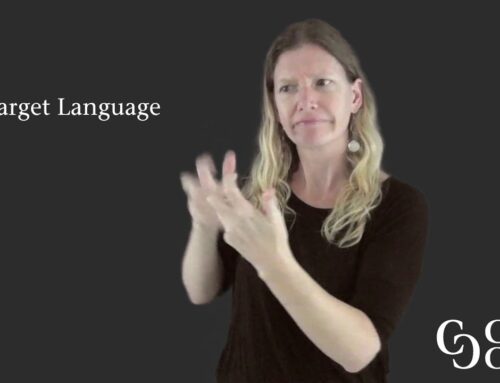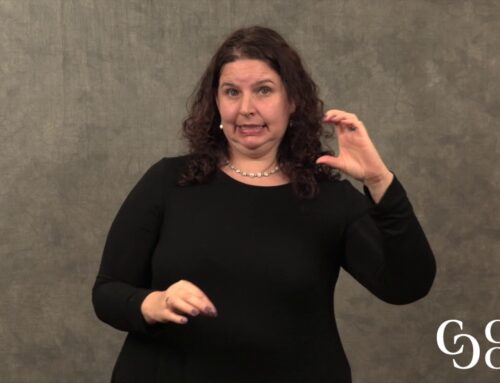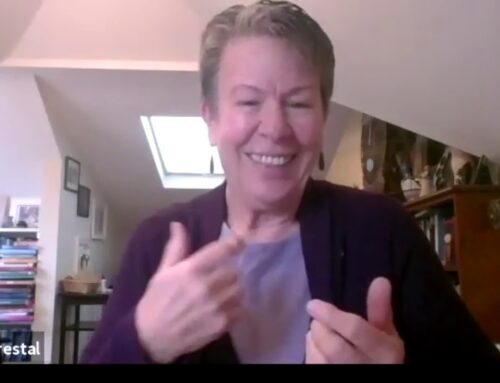Jessalyn explains a process for grounding as a way for self-care.
A translation is available below in English. It is designed as a resource for working with the text in ASL. It is not intended to represent a definitive way to translate the text.
Visual Description
A white woman with blonde hair pulled back wears a black shirt and sits in front of a grey screen. A white CATIE Center logo is in the lower right corner of the screen. The woman narrates the entire video in American Sign Language.
This is self care: grounding.
I invite you to take a moment to become aware of your space.
Now I would ask you to notice five things in the room that you can see.
For instance I see a clock, I see a window, I see a writing utensil, I see curtains, and I see a cup.
Next I invite you to observe four things in the room that you can physically touch.
For instance, I can feel my shirt, the table, my hair, and a mug.
Now I invite you to notice three things in the room that you can hear, either with your eyes or your ears.
This works for either hearing or Deaf participants.
If you are using your auditory sense, I would encourage you to see– or hear–I encourage you to listen for external things.
For example, a dog barking, or the clock ticking, or the whirring of the ceiling fan.
For our Deaf and hard of hearing participants, you might think more about things like the wind blowing, or waves on the ocean, or drums beating.
Now I invite you to observe two things in the room that you can smell. Maybe you can’t smell anything; if that’s the case I encourage you to walk around to another room. You might smell soap, or flowers.
Finally I invite you to notice one thing that you can taste. It could be coffee you had this morning, or the sandwich you had for lunch.
This sensory approach– five things you can see, four things you can touch, three things you can hear (either auditorily or visually), two things you can smell,
and one thing you can taste– helps us to feel grounded in our surroundings, and know that we are safe and our own space.




